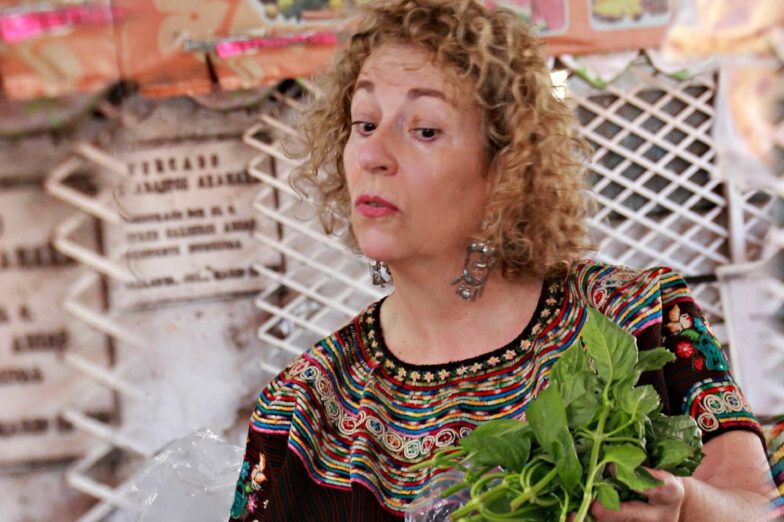We can lose our human and animal companions at any moment, and it becomes one of the most profound experiences of our lives. I was fortunate to pass my adolescence with no losses of family or friends, but since I entered my twenties, they have been seemingly nonstop, with the loss of nearly thirty women friends over the years, most all to cancer. I have also mourned the loss of my parents and my three dogs. Each time I have learned something about loss and how painful and unwelcome it is, and how ritual can soothe the pain and bring me closer to my loved ones, both alive and dead.
Rosemary has long signified deep friendship and lasting memories. It is also the herb that will help to guide the loved one to their next place, support us through grief, and help us celebrate the life of our loved one.
The Ritual
First, identify a place in your home where you will create an ofrenda, or an altar for your loved one, for a month-long period. Begin by gathering bunches of rosemary, either from the garden, from friends, or from the store. Tie these bunches together at the end and hang them upside down near the doorways of your home to dry.
Then gather items that represent the four elements of nature: fire, air, water, and earth. You may choose any object that has meaning for you; there is no right or wrong choice. For the fire element, a candle, incense, ashes, or hot spices work well. Air is associated with the colors blue, yellow, and white along with wood, so any wooden objects with these colors might be something to choose. The water element might be represented by a bowl of water or a photograph of your favorite body of water. For the earth element you might consider something that comes from the earth; dirt, a root, a gem, or something made from clay. Surround the altar with them so that it is embraced by the forces of nature. Engage family members and friends who want to participate. Young ones might make some art or items to add to the basket.
Gather photographs from the earliest to the last days of your loved one. As family and friends come to celebrate, they enter the home and remove their shoes. They then join in pairs, and each pair takes a bunch of rosemary. One person holds the rosemary while the other takes a light cotton string and wraps it several times around and along the length of the bunch so that the thick bunch of sprigs and branches becomes a tightly wound wand.
While the string is being wound, the pair looks each other in the eyes and says, “The circle of life goes round and round, the circle of life goes round and round. We celebrate the life of [Name]. The circle of life goes round and round.”
When everyone is finished, they gather in a circle. One person lights their wand at the tip until the rosemary starts to smoke and then, holding the wand, they weave in and out of the circle, bathing each member in smoke. When they return to where they started, they hand the wand to their partner who does the same thing. Once that person has circled the entire group, the next person lights their wand and make their trips around the circle. This continues until each person in the circle has had an opportunity to weave in and out holding their wand.
Following the circle, individuals might add small meaningful items to the ofrenda basket, and then everyone gathers around the table to eat the favorite foods of the loved one and share stories and photographs. As people depart, they may leave their wand at the altar and exchange it for another person’s wand one month later to signify the enduring connections with each other and through the loved one who has journeyed on.
CAUTION: If this ceremony is done inside, good ventilation should be provided, and people with respiratory issues might want to sit this out at a distance.
Recipes
Baked Pears and Rosemary
This pear recipe is sweet and tempered by a touch of rosemary as a reminder that this loved one’s life brought much sweetness, but there is also sadness at their departure. The recipe is also fast and easy to prepare, signifying how quickly life changes.
Preheat the oven to 350°F and grease a cooking sheet. Slice three ripe Bartlett pears in half and take out the seeds and core, so there is a little gully in the middle of each. Fold a fresh rosemary sprig or two and tuck it into the center of each pear along with a few raisins. Place the pears cut-side down on the prepared baking sheet and drizzle them with maple syrup. Bake for 45 minutes. Serve with a cup of Hot Coconut Kava.
Hot Coconut Kava
Kava is used traditionally in Hawaii and Polynesian to recognize nodal moments in life, like loss. Kava helps us experience feelings of grief without numbing the feelings. Because kava can be mildly stimulating, I suggest not drinking this drink after 5:00 pm. If children participate in this ritual make them a special children’s drink using the same recipe but without the kava. This recipe is suitable for up to 4 people.
SERVES 6
- 1 to 2 ounces kava root (¼ to ½ ounces ground powder kava root per person)
- One 13.5-ounce can coconut cream or coconut milk
- 1 cup hemp milk
- 1 teaspoon ground cinnamon or half a cinnamon stick
- Pinch of cardamom
- 1 tablespoon ghee or raw butter
- 2 drops of vanilla or a small piece of vanilla pod
- 10 drops of stevia
Put all the ingredients except the ghee, vanilla, and stevia in a saucepan over medium heat. Simmer for 30 minutes. Remove from heat and strain out the kava root and cinnamon stick. Add the ghee, vanilla and stevia. Froth to blend and serve hot.
- Touch Therapy for Trauma Recovery - April 19, 2024
- The Soul of Basil - March 12, 2024
- A Comprehensive Guide to Natural Hypothyroidism Treatment - November 17, 2023

Are You Ready to Advance Your Career?
If you want to advance your career in integrative medicine, explore my courses and certifications.












